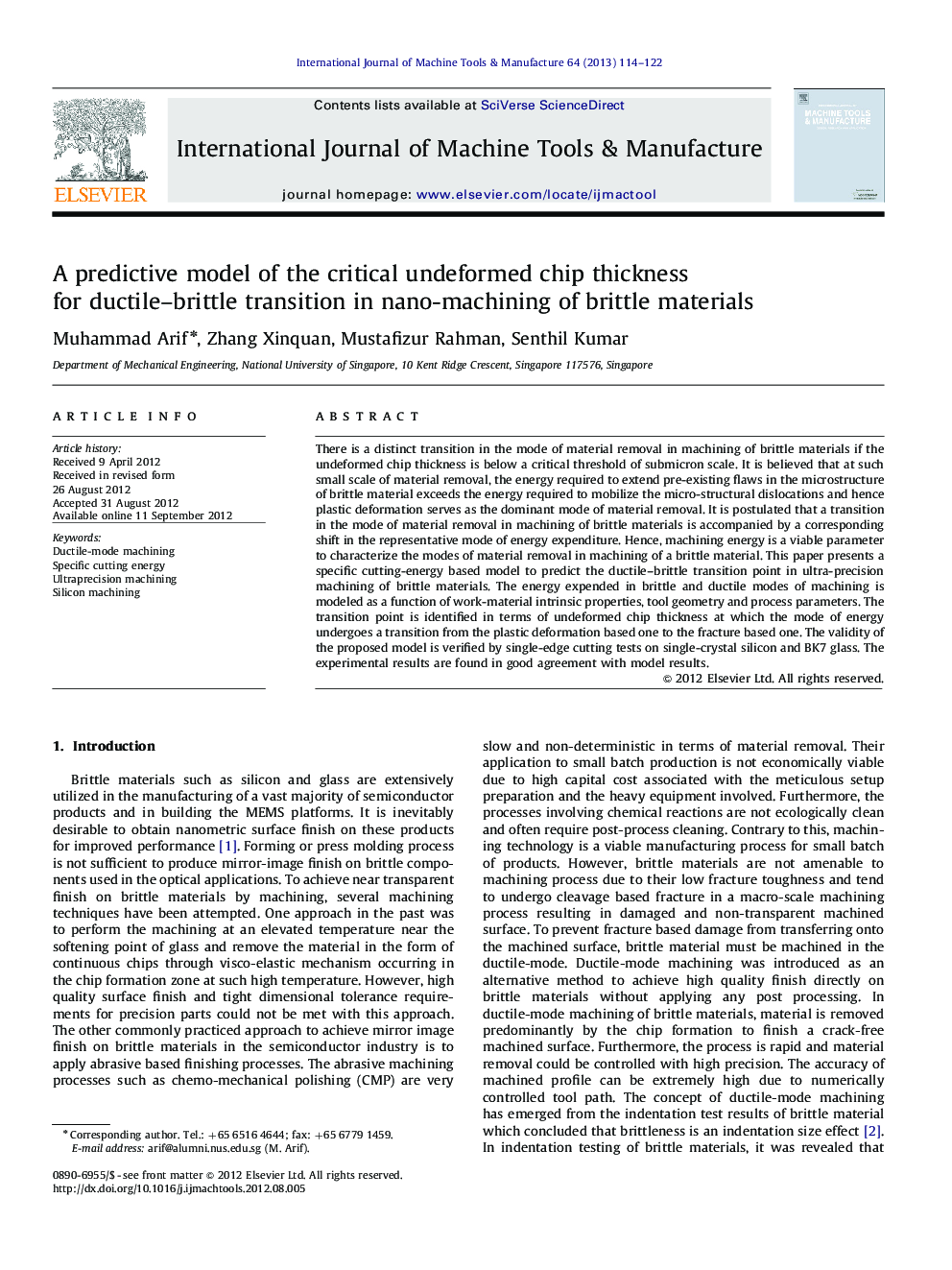| Article ID | Journal | Published Year | Pages | File Type |
|---|---|---|---|---|
| 784436 | International Journal of Machine Tools and Manufacture | 2013 | 9 Pages |
There is a distinct transition in the mode of material removal in machining of brittle materials if the undeformed chip thickness is below a critical threshold of submicron scale. It is believed that at such small scale of material removal, the energy required to extend pre-existing flaws in the microstructure of brittle material exceeds the energy required to mobilize the micro-structural dislocations and hence plastic deformation serves as the dominant mode of material removal. It is postulated that a transition in the mode of material removal in machining of brittle materials is accompanied by a corresponding shift in the representative mode of energy expenditure. Hence, machining energy is a viable parameter to characterize the modes of material removal in machining of a brittle material. This paper presents a specific cutting-energy based model to predict the ductile–brittle transition point in ultra-precision machining of brittle materials. The energy expended in brittle and ductile modes of machining is modeled as a function of work-material intrinsic properties, tool geometry and process parameters. The transition point is identified in terms of undeformed chip thickness at which the mode of energy undergoes a transition from the plastic deformation based one to the fracture based one. The validity of the proposed model is verified by single-edge cutting tests on single-crystal silicon and BK7 glass. The experimental results are found in good agreement with model results.
► This study models specific cutting energy to determine ductile–brittle transition point. ► The ductile-mode energy is modeled by using the plasticity principle. ► The brittle-mode energy is modeled by using the fracture mechanics principle. ► The transition point occurs when the energy expended switches from one mode to the other.
